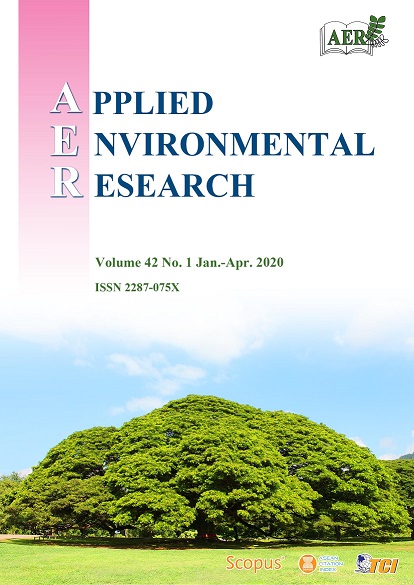Geochemical Characteristics of Three Hot Springs from Western Thailand
Main Article Content
Abstract
At present a total of 118 hot springs are distributed throughout Thailand. Several studies with a focus on high-temperature hot springs related to geothermal resources were conducted in the northern and southern part of the country. Geochemical data, however; especially isotopes of medium-low temperature hot springs are still scarce. In this study, we aim to investigate the geochemical composition of hot spring waters from western Thailand. The examination of elemental compositions and stable isotopes (δ18O, δD) of 3 hot springs; Hin Dad, Bor Klueng and Baan Samorthong (surface water temperatures of 40–50 °C), contributes to a better understanding of reservoir temperatures and recharge. The results from elemental compositions show that the chemical type of the hot spring waters from Baan Samorthong and Bor Klueng are alkaline-carbonate, while the hot spring from Hin Dad is a calcium-carbonate type with a high amount of sulfate related to bedrock. Based on the silica geothermometer approach, reservoir temperatures are calculated to be between 65–90 °C. The stable isotopes δD and δ18O of all hot spring waters suggest a recharge with meteoric waters as well as mixing with groundwater. The three hot springs in this study are well-known for public water recreation and health therapy. Regarding toxic elements, Baan Samorthong hot spring has high fluoride (F-) (14.84 mg L-1); while Hin Dad hot spring shows concentrations of Pb2+ (0.07 mg L-1) and Bor Klueng of Pb2+ (0.02 mg L-1), As5+ (0.01 mg L-1) and F- (4.35 mg L-1) which are above drinking water limits and might lead to health problems. Therefore, we recommend not to drink the water from the hot springs. In conclusion, a better understanding of geochemical data is beneficial for the sustainable development of medium-low temperature hot springs in Thailand.
Article Details

This work is licensed under a Creative Commons Attribution-NonCommercial 4.0 International License.
Published articles are under the copyright of the Applied Environmental Research effective when the article is accepted for publication thus granting Applied Environmental Research all rights for the work so that both parties may be protected from the consequences of unauthorized use. Partially or totally publication of an article elsewhere is possible only after the consent from the editors.

